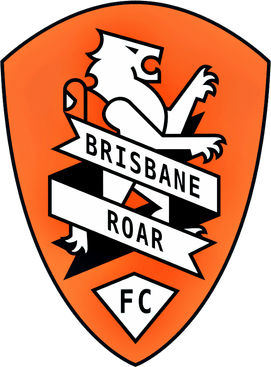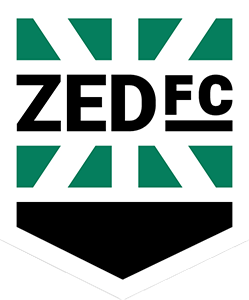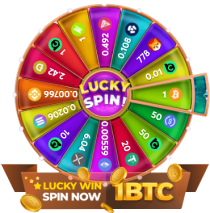Draw predictions involve a complex analysis of numerous variables that influence a game’s outcome. Predictors often look at team form, injury lists, tactical setups, and even psychological factors such as motivation and team morale. For example, a team that has drawn many of its recent games may be more likely to settle for a draw, especially in high-stakes scenarios or against equally matched opponents.
Another aspect to consider is the historical performance of teams in specific tournaments or leagues. Some leagues are notoriously prone to draws, possibly due to defensive playing styles or closely matched teams within the league. Bettors who familiarize themselves with these trends can better predict when a draw might be the most likely outcome.
Lastly, environmental factors also play a significant role. Weather conditions, such as heavy rain or extreme cold, can level the playing field, reducing the chances of a high-scoring match and increasing the probability of a draw. The venue can also impact the likelihood of a draw; some teams perform significantly better at home and might be more conservative when playing away. Understanding these subtleties can enhance the accuracy of draw predictions, making them an essential tool for sophisticated bettors looking for an edge in the betting markets.
Understanding Draw Predictions
Understanding draw predictions requires not only a grasp of team performances but also an appreciation of the psychological and tactical aspects of the game. Teams with a conservative approach to a particular match, especially in crucial games where the stakes are high, are more likely to end up with a draw. Additionally, external conditions such as weather and pitch quality can significantly influence the likelihood of a draw. Teams may struggle to perform to their full offensive capabilities under adverse conditions, leading to fewer goals scored.
Moreover, understanding betting odds and their calculation is crucial. Odds for a draw in a match are usually higher due to the lower probability of this outcome compared to a win or loss. Betting platforms use complex algorithms that analyze vast amounts of data to set these odds. By understanding these odds, bettors can make more informed decisions on whether the potential return on a draw is worth the risk.
To further illustrate the influence of various factors on draw outcomes, consider the following table which shows hypothetical data of past matches highlighting conditions that commonly lead to draws:
| Match Date | Teams Involved | Score | Key Factors Influencing Draw |
| 2022-04-15 | Team A vs Team B | 2-2 | Heavy Rain, Strong Defense |
| 2022-04-22 | Team C vs Team D | 0-0 | Poor Pitch, Tactical Play |
| 2022-05-05 | Team E vs Team F | 1-1 | High Stakes, Key Injuries |
This table helps identify patterns and commonalities in games that result in draws, such as adverse weather conditions, strategic defensive setups, and significant player absences. Analyzing such data helps in making more accurate predictions and understanding when it might be strategic to bet on a draw.
Examples of Draw Predictions
Adding to the examples provided, let’s consider two more scenarios for draw predictions, emphasizing the strategy behind such forecasts:
- Match: Team E vs. Team F
- Prediction: Draw (2-2)
- Rationale: Both teams are known for their aggressive offensive play but have vulnerable defenses, which often leads them to concede as many goals as they score. Their last two encounters have also ended in high-scoring draws.
- Match: Team G vs. Team H
- Prediction: Draw (0-0)
- Rationale: Team G is playing at home where they have a history of tough defense, and Team H is currently missing their key striker due to injury, likely reducing their scoring ability. Historical data shows low scoring games when these teams meet.
These additional examples highlight how specific conditions such as team form, key player availability, and historical encounters can influence draw predictions.
Table of Draw Prediction Scenarios
| Match | Predicted Score | Rationale |
| Team A vs. Team B | 1-1 | Strong defenses, history of draws in recent games. |
| Team C vs. Team D | 0-0 | Team D’s strong defense vs. Team C’s weak away offense. |
| Team E vs. Team F | 2-2 | Aggressive offense with poor defense leads to high-scoring draws. |
| Team G vs. Team H | 0-0 | Team G’s strong home defense vs. Team H’s reduced offense due to injury. |
This table provides a clear and structured overview of different draw prediction scenarios, allowing readers to quickly grasp the reasoning behind each prediction. These examples and the accompanying table illustrate the multifaceted approach required in accurately predicting draw outcomes in sports betting.
Strategies for Betting on Draws
Betting on draws, while potentially profitable due to higher odds, requires specific strategies to enhance the chances of winning. The appeal of betting on draws lies in the higher potential payouts that bookmakers offer due to the lower probability of a draw occurring compared to a win or loss. However, successfully betting on draws demands a nuanced approach that considers a variety of factors to isolate matches where a draw is more likely.
Research and Analysis
- Team Performance: Analyze both teams’ performance in recent matches, especially against teams of similar strength.
- Head-to-Head Records: Some teams tend to end in draws frequently when playing against each other.
Statistical Approach
- Frequency of Draws: Some leagues or teams have a higher frequency of draw matches. Identifying these can improve the odds of successful betting.
- Goals Scored and Conceded: Teams with similar offensive and defensive records are more likely to draw.
How Do We Predict Draw Predictions?
Predicting draw outcomes in sports, particularly in football, requires an analytical approach where both quantitative and qualitative data are crucial. This method combines historical data analysis with contemporary insights to forecast outcomes where neither team wins or loses. The precision of such predictions significantly improves with the integration of comprehensive data and expert evaluations.
Below is a table that outlines the key elements used in predicting draw outcomes, along with examples of data types and sources:
| Element | Description | Examples of Data/Sources |
| Data Collection | Gathering detailed records and current facts about the teams. | Past match results, current league standings, player injuries, weather conditions. |
| Statistical Models | Employing mathematical models to analyze and predict outcomes. | Poisson distribution models, historical match data, head-to-head statistics. |
| Expert Insight | Integrating professional analysis into the prediction process. | Expert opinions, analyst reports, tactical assessments by seasoned coaches. |
This structured approach allows for a holistic analysis, combining hard stats with nuanced understandings of team dynamics and individual player performances. Such a robust methodology helps in creating more accurate predictions, potentially leading to successful betting outcomes when used judiciously.
How Often Should You Use Draw Predictions
When considering how often to use draw predictions, it’s important to incorporate them as a strategic component of your overall betting approach. Draw predictions shouldn’t be the primary focus of all bets but can be effectively utilized in specific scenarios where the conditions are favorable.
Here’s a guideline table for incorporating draw predictions into your betting strategy:
| Scenario | Frequency of Using Draw Predictions | Explanation |
| High likelihood of draw | Moderate to High | Employ draw predictions more frequently in leagues or matches where draw outcomes are common or when both teams have a history of drawing against each other. |
| Balanced teams | Moderate | When two teams are very evenly matched in terms of skills and recent performance, the probability of a draw increases. |
| High-risk matches | Low | In matches where a clear favorite is playing a much weaker team, the likelihood of a draw is reduced, so use draw predictions sparingly. |
| Betting budget | Variable | Adjust the frequency of draw bets according to the size of your betting budget and risk tolerance levels. Higher budgets may tolerate more frequent draw bets. |
| Strategic diversity | Moderate | Include draws as part of a diverse betting strategy to cover various possible outcomes and spread risk. |
Key Points for Strategic Use of Draw Predictions
- Analysis-Based: Make draw predictions based on thorough analysis rather than intuition.
- Market Value: Consider the odds provided by bookmakers; sometimes, the potential payout makes a draw bet particularly appealing.
- Record Keeping: Maintain records of your draw predictions and outcomes to refine your strategy over time.
By integrating draw predictions into your betting strategy with the considerations mentioned in the table, you can better manage the inherent risks and potentially enhance your overall betting success.
Balancing Predictions and Risks
Balancing predictions and risks in draw betting involves strategic planning and understanding the high risk associated with the higher odds of draw outcomes. To mitigate risks, draw betting should be a part of a diverse betting strategy, not the sole focus. Utilizing statistical analysis and historical data can inform better betting decisions, identifying patterns and conditions under which teams are more likely to draw. Additionally, disciplined bankroll management is essential; setting limits on draw bets within the overall betting budget helps manage potential losses. This approach ensures that while you capitalize on the potentially high rewards of draw predictions, the risks are kept in check.






































Your review has been sent for moderation